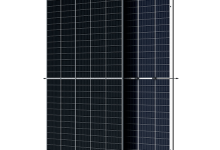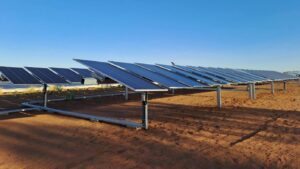Large scale solar developers in Australia are starting to explore new, larger, module sizes in their installations. There are now many large modules on the market. But is bigger always better?
A large scale PV power plant not only delivers consistent green energy, but is also a significant financial investment over 25 years. Long term reliability and return on investment are critical factors in any project.
In Australia, many of these solar plants must operate in sometimes remote regions and deal with
harsh conditions.
A PV module needs to be able to operate in different types of extreme weather conditions and increasing the size of modules too far has the potential to introduce significant additional risk to power plants.
In Australia hail can be incredibly damaging to solar installations affecting efficient operation and return on investment.
Solar panels utilise a glass covering to ensure maximum light reaches the solar cells to generate electricity, this creates an obvious weakness and so no modules available on the market in Australia currently warrant against damage to modules under extreme hail conditions.
To reassure customers LONGi sent their new Hi MO-5 modules to TÜV SÜD, an independent testing and verification centre, to see how well they perform. The TÜV SÜD report demonstrates that Hi-MO 5 was successful in passing a 35mm hail impact test.

Alongside this test from TÜV SÜD, LONGi internal laboratories have rigorously tested the Hi-MO 5 module (based on a 182mm wafer with dimensions of 2256×1133mm, 2.56m2) against a standard oversized module (dimensions 2384×1303mm, 3.11m2) currently available. This hail performance test exposes some issues in modules that are too large.










